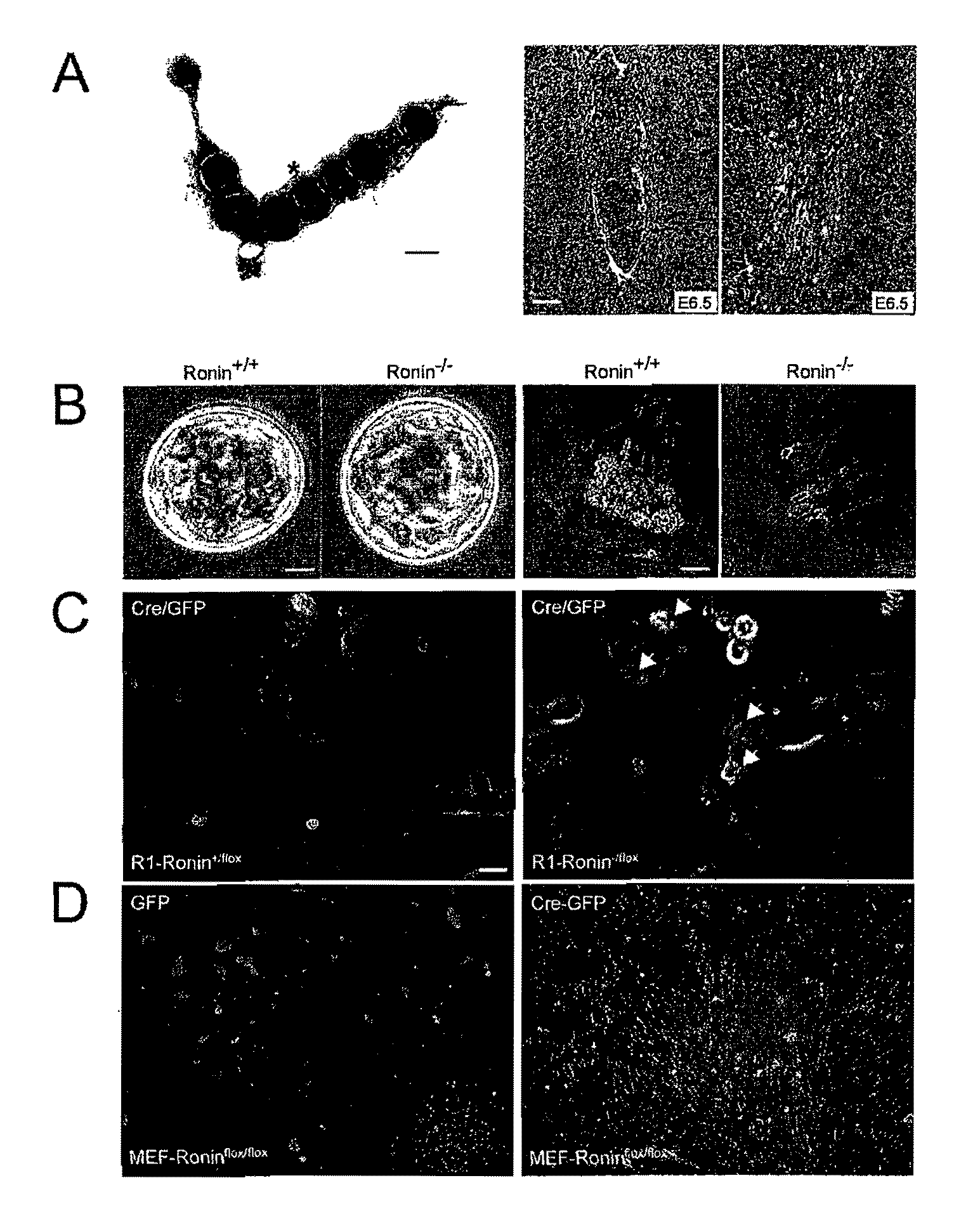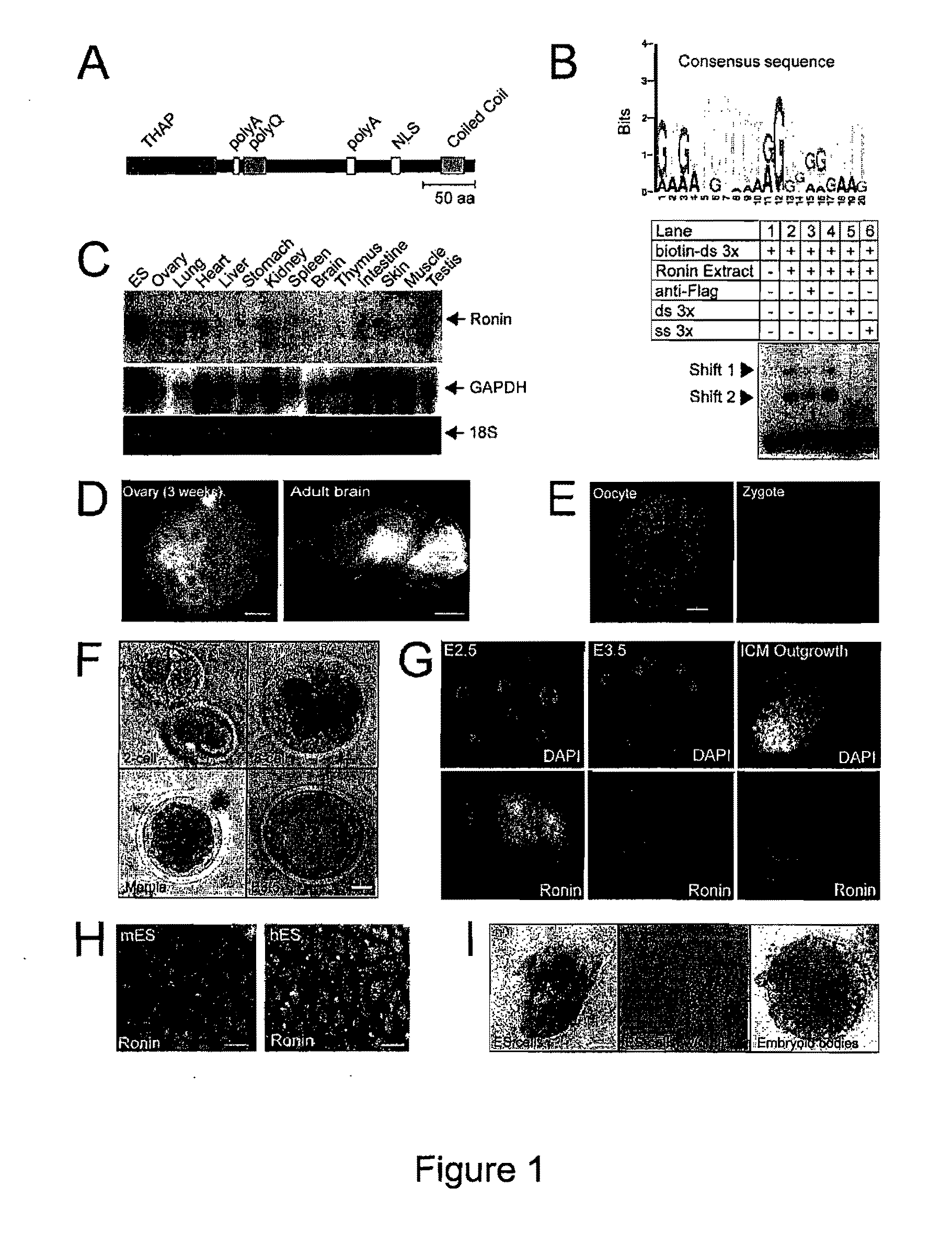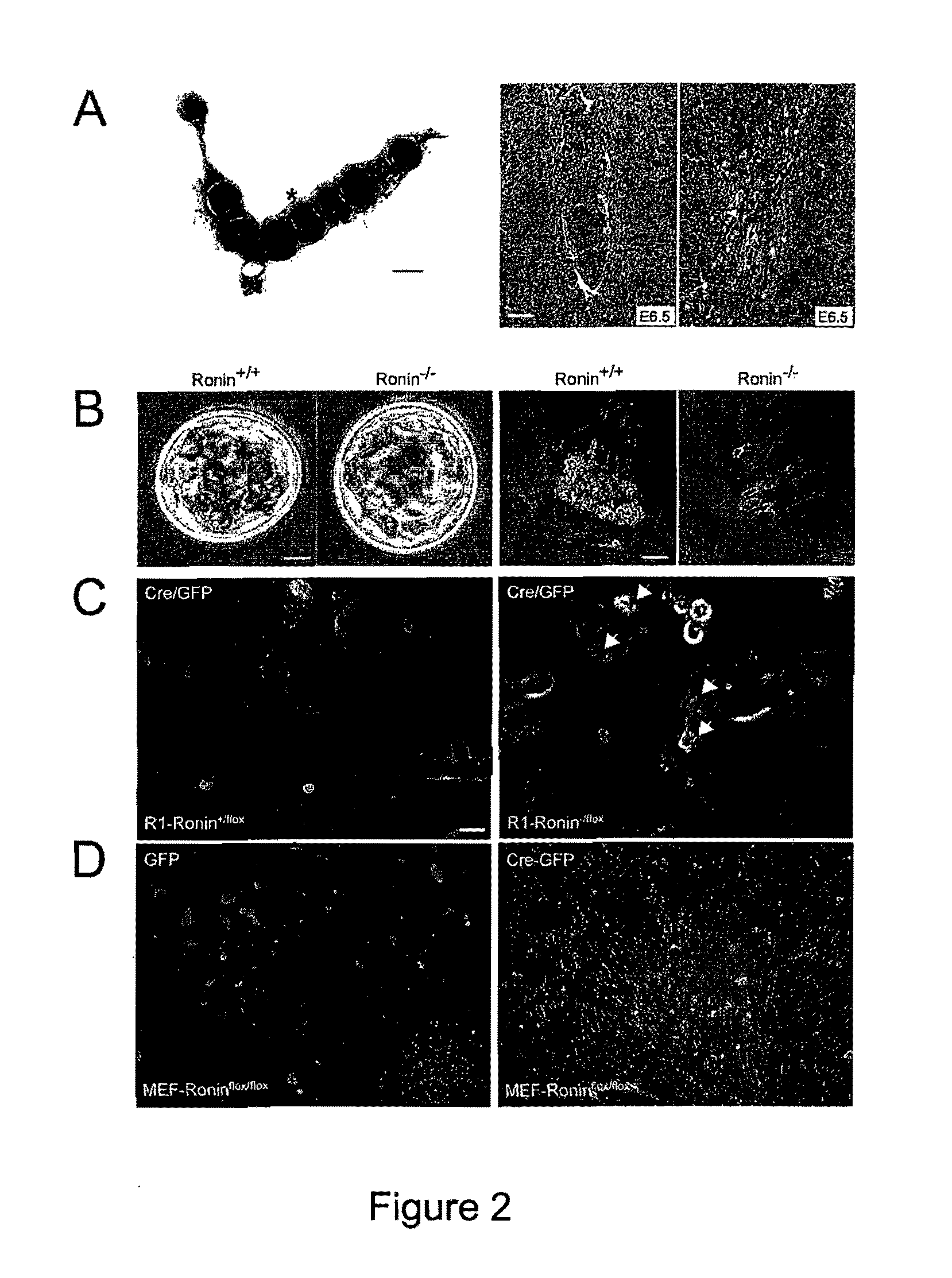Ronin is Essential for Perpetuity of Mouse ES Cells, and Acts Independently of Canonical Pathways
a mouse es cell and perpetuity technology, applied in the field of mouse es cell perpetuity, can solve the problems of compromising cell growth and viability, the full transcriptional circuitry underlying the control of es cell survival and differentiation has not yet emerged, etc., to prevent the differentiation of an es cell, and maintain the self-renewal capacity of the es cell
- Summary
- Abstract
- Description
- Claims
- Application Information
AI Technical Summary
Problems solved by technology
Method used
Image
Examples
experimental examples
[0163]The invention is further described in detail by reference to the following experimental examples. These examples are provided for purposes of illustration only, and are not intended to be limiting unless otherwise specified. Thus, the invention should in no way be construed as being limited to the following examples, but rather, should be construed to encompass any and all variations which become evident as a result of the teaching provided herein.
[0164]The materials and methods employed in the experiments disclosed herein are now described.
Culture, Differentiation, Alkaline Phosphatase Staining and Transfection of Cells
[0165]Mouse embryonic fibroblasts (MEFs) and HEK293 cells were cultured in Dulbecco's Modified Eagle's Medium (DMEM: Gibco Invitrogen Carlsbad, Calif.) supplemented with 10% fetal bovine serum (FBS; Gibco), L-Glutamine (Gibco), 100 nM non-essential amino-acids (Gibco) and μ100 M beta-mercaptoethanol (Fluka, Milwaukie, Wis.). Mouse ES cells (R1 cells and derivat...
example 1
Identification of Ronin by Yeast Two-Hybrid Screening
[0214]Previous studies showed that Nanog is targeted and cleaved by the pro-apoptotic enzyme Caspase-3 upon induction of ES cell differentiation (Fujita et al., 2008, in press), leading us to hypothesize that other, still unknown factors critical for ES cell pluripotency may be Caspase-3 targets as well. Yeast two-hybrid screening was performed on a human ES cell cDNA expression library, using constitutively active Caspase-3 (mCasp3rev) as bait. mCasp3rev spontaneously folds into its active conformation and recognizes and binds to target proteins, but no longer cleaves them owing to a C163S substitution. An estimated 32 million clones were screened, with 556 clones testing positive for interaction with the Caspase-3 mutant. Further study of a representative set of 286 clones, using rescued plasmids, digestion with restriction enzymes, and a validation assay, yielded 116 candidate genes. Subsequent sequencing and analysis with an i...
example 2
Ronin Expression Patterns
[0217]Northern blot analysis of multiple tissues in the mouse failed to detect appreciable expression of the Ronin gene, except in the mouse ES cell line used as a positive control (FIG. 1C). To further clarify the expression patterns of Ronin, a sensitive lacZ transgenic reporter mouse line in which a 3.3-kb genomic fragment representing the mouse Ronin promoter, was ligated to the open reading frame of the β-galactosidase gene. The resultant mouse line expressed β-galactosidase in tissues where the Ronin promoter was active, in a pattern similar to the expression of wild-type Ronin. As in the Northern blot analysis, Ronin was not abundantly expressed in adult tissues, with two exceptions: (i) ovary, which showed very strong positive staining in oocytes (FIG. 1D, left), and (ii) some areas of the brain, including hippocampus, olfactory bulb and Purkinje cells (FIG. 1D, right). To establish the subcellular compartment in which Ronin is found, an antibody was...
PUM
| Property | Measurement | Unit |
|---|---|---|
| time | aaaaa | aaaaa |
| concentration | aaaaa | aaaaa |
| pH | aaaaa | aaaaa |
Abstract
Description
Claims
Application Information
 Login to view more
Login to view more - R&D Engineer
- R&D Manager
- IP Professional
- Industry Leading Data Capabilities
- Powerful AI technology
- Patent DNA Extraction
Browse by: Latest US Patents, China's latest patents, Technical Efficacy Thesaurus, Application Domain, Technology Topic.
© 2024 PatSnap. All rights reserved.Legal|Privacy policy|Modern Slavery Act Transparency Statement|Sitemap



